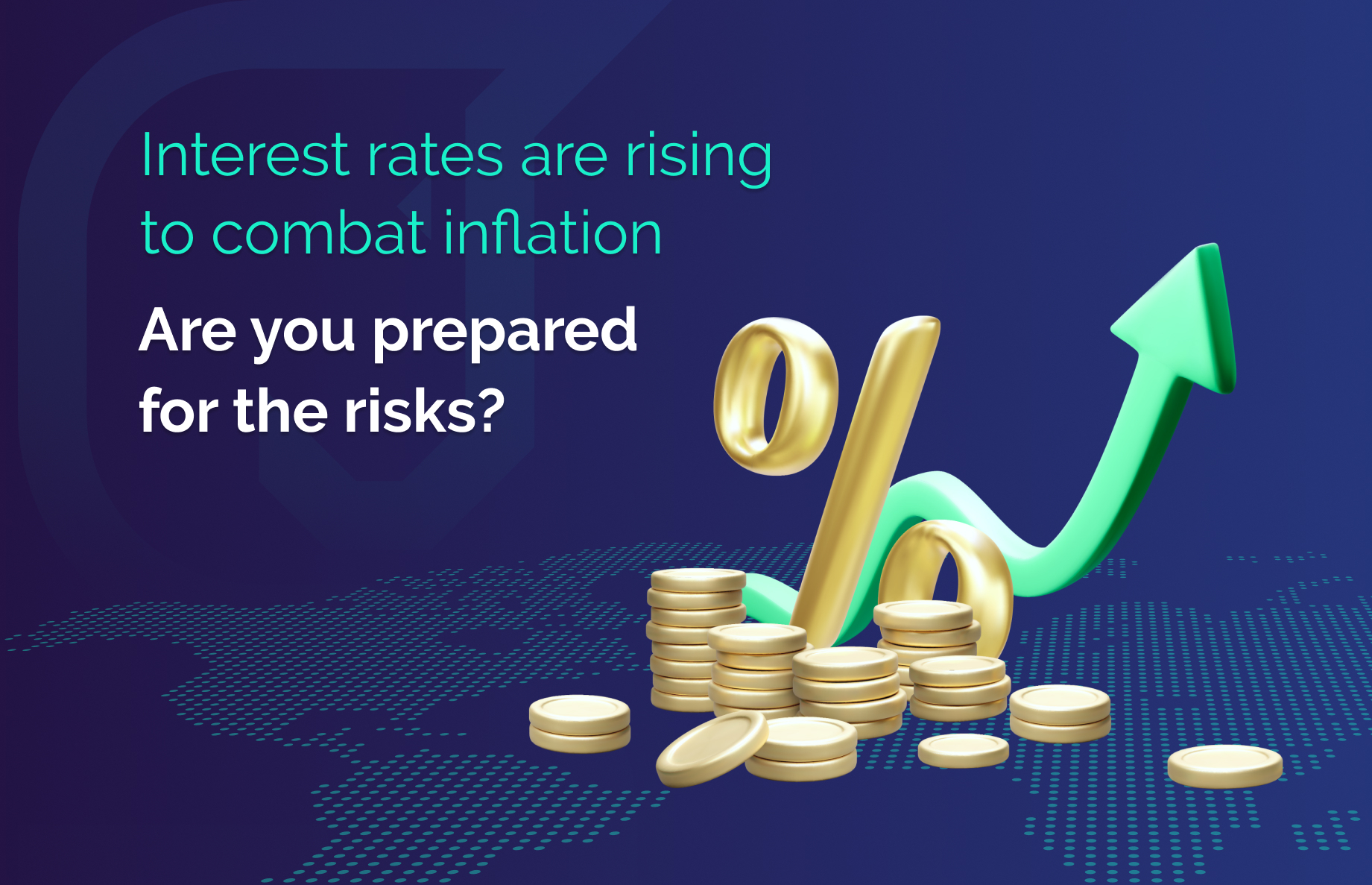Risk-Resilient Banking. How can banks prepare for inflation challenges?
Published December 08, 2023

Anti-inflation strategies
Inflation has far-reaching implications, not only for consumers and businesses but also for financial institutions. To tame inflation, central banks deploy various strategies that are supposed to lower inflation, but by doing so, they end up triggering a chain reaction that puts pressure on the overall financial system. Here are just a few examples of such lowering-inflation strategies:
- Raising Interest Rates: While this can help control inflation, it can also lead to higher borrowing costs for banks and reduce the value of their fixed-income investments, impacting profitability.
- Tightening Monetary Policy: Reducing the money supply and increasing reserve requirements can limit lending and economic growth. This might lead to a reduction in loan demand and negatively affect banks’ income.
- Asset Purchases: Central banks might sell government securities to reduce the money supply and curb inflation. This can be effective in controlling inflation, but it would also reduce the value of banks’ bond portfolios.
- Reduced Loan Quality: High inflation can lead to reduced loan quality as borrowers struggle to meet their debt obligations. Banks may experience a rise in non-performing loans, which affects their asset quality.
How can higher interest rates help fight high prices?
Simply put, interest rates are the cost of borrowing money. When banks increase interest rates, borrowing becomes more expensive and, therefore, less accessible. Consumers (people or businesses) might think twice about taking out loans to make investments they can’t afford. So the higher interest rate is supposed to slow down spending, typically lowering overall demand and hopefully reducing inflation.
According to Deutsche Welle (DW), the European Central Bank has lifted interest rates almost 10 times in a row over the past year in an effort to curb persistently high inflation. This decision came after Russia’s invasion of Ukraine caused energy and food prices to go up. Before this, interest rates in the euro area had been very low, even reaching negative levels for several years.
Similarly, the US Federal Reserve recently raised its main interest rate and hinted that more increases might happen in the future. We have 2 scenarios that we can expect:
- Inflation goes down, which is what the markets expect, and policy rates decrease, it could ease pressure on banks because long-term rates would fall, causing asset prices to go up.
- Inflation stays high, policymakers might need to raise rates more, lowering asset prices and putting more pressure on banks. In this situation, policymakers might have to decide between fighting inflation hard or supporting the stability of banks.
Building resilience in inflation rate rise scenarios
Here is where banking resilience comes into play. Proper precautions can help reduce the chances of banks facing challenges triggered by poor risk management when policymakers raise interest rates to combat inflation. Here are some clear examples of actionable precautions banks can take.
Digital Transformation in Loan Origination
We don’t like to make any compromises when it comes to digitalizing Loan Origination. A fully digitalized Loan Origination process is achieved when the need for in-person visits to the bank is eliminated, not just reduced. In an end-to-end system, all stages of lending, from application to funding, can and should occur online. This includes digital submission and verification of application documents, automated credit scoring, electronic signatures, and online access to the new loan. This is something we were able to achieve in the past because minimizing physical paperwork, enhancing efficiency, and providing user-friendly experiences for applicants is our goal whenever we sign a new Loan Origination collaboration.
You can embrace digitalized loan origination processes both for the sake of your current clients, as well as for the ultimate goal of providing better loan accessibility. Connecting this online process to credit scoring systems allows faster and more accurate assessments, reducing the risk associated with poor lending decisions.
Diversified Loan Portfolios
Banks can reduce their vulnerability by maintaining diversified loan portfolios. This means not relying too heavily on a single type of loan or industry. Diversification can help mitigate losses in case a particular sector is adversely affected by interest rate changes.
In tandem with this strategic approach, we bring a transformative edge to the banking landscape through our Loan Origination solution. Going beyond the conventional loan processes, we offer a streamlined, 100% online process, encompassing application processing, underwriting, and funding. This digital transformation not only enhances accessibility but also expedites decision-making. So yes, users might think twice before taking out loans in inflationary periods, but making it easier than ever to do so, would increase the chances.
The bad and the good news
According to the Minneapolis Fed blog, based on past behavior, banks probably won’t take significant steps on their own to be more resilient. But the good news is that proactive measures and innovative solutions, empower banks to enhance their resilience in the face of economic uncertainties. There are more proactive measures that can be taken depending on the type of financial institution we are dealing with, but if you think the ones we stated above may help your case, leave us a message.
Sources:
How tech-savvy banks monetize BaaS
BaaS provides new revenue streams beyond traditional banking. It helps you stay relevant and innovative, allowing you to compete with FinTechs. BaaS enables.
5 Open Banking myths that almost got small banks fooled
Inflation has far-reaching implications, not only for consumers and businesses but also for financial institutions
Don’t fall behind!
Get notified of new articles (only once a month)


